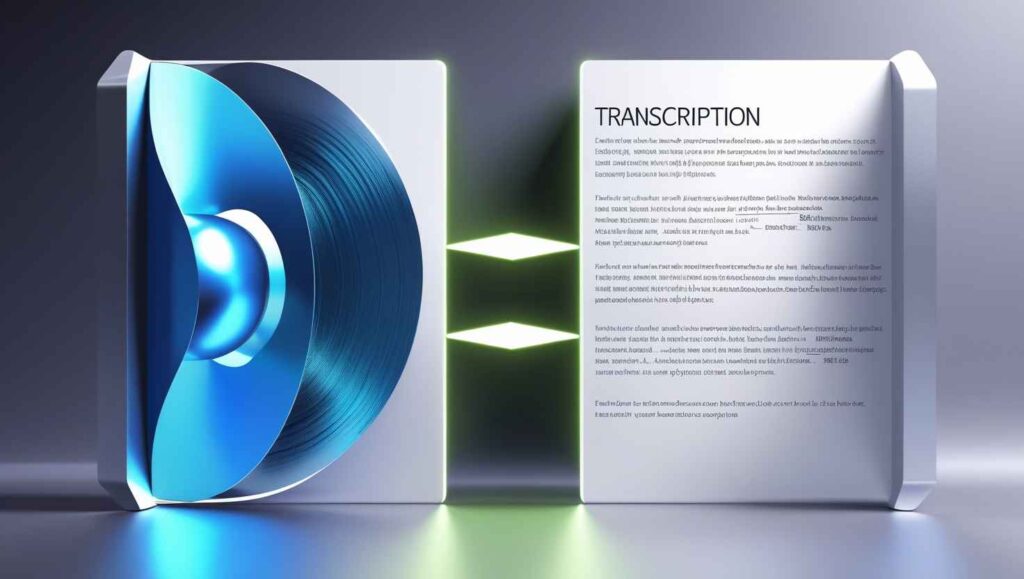Introduction
In today’s digital world, transcription services have become an invaluable resource for businesses and individuals alike. Essentially, transcription involves turning spoken words from audio or video recordings into written text. This might sound simple, but it’s a service that’s in high demand across industries like media, healthcare, education, and law. If you’re looking to earn money online, offering transcription services is a great way to get started.
Let’s break down how you can begin your journey as a transcriptionist, the tools you’ll need, and the steps to grow your services into a sustainable source of income.
What Is Transcription?

Transcription is the process of listening to audio or video recordings and converting them into a text format. This service is crucial for creating records of meetings, interviews, lectures, and more. There are different types of transcription, including:
- General Transcription: Everyday recordings like podcasts, interviews, or business meetings.
- Medical Transcription: Creating reports and notes from medical professionals’ recordings.
- Legal Transcription: Documenting legal proceedings and court hearings.
Each type may require specific knowledge, but they all share the same fundamental skills of listening, understanding, and accurately typing.
Why Offer Transcription Services?
Transcription is appealing for several reasons. It offers flexibility, allowing you to work from home or anywhere with an internet connection. It’s also a low-cost business to start since you only need a computer, headphones, and reliable software. Plus, the demand for transcription services continues to grow as more content is created daily. For anyone looking to work independently, this field can be a rewarding choice.
Skills You’ll Need

To become a good transcriptionist, you don’t need a fancy degree, but a few key skills will make all the difference:
- Great Listening Abilities: Picking up on accents, tones, and unclear speech.
- Strong Typing Skills: Fast and accurate typing is essential. The quicker you type, the faster you’ll finish your work.
- Good Command of Language: Grammar, punctuation, and spelling matter when creating polished transcripts.
- Research Skills: Sometimes, you’ll need to look up terms, especially for technical or industry-specific topics.
- Patience and Focus: Transcription can be time-consuming, so staying focused is important.
What Do You Need to Get Started?
One of the best things about transcription is that the initial setup is simple and affordable. Here’s what you’ll need:
- A Computer or Laptop: A basic model is sufficient, but ensure it’s reliable.
- Headphones: Invest in good-quality headphones for clear audio playback.
- Transcription Software: Tools like Express Scribe or Otter.ai can make the process easier.
- Internet Connection: For downloading files and submitting your work.
- Word Processor: Use software like Microsoft Word or Google Docs for typing and editing.
Optional extras include a foot pedal to control audio playback and noise-cancelling headphones to block distractions.
Recommended = How to Earn Passive Income as a Freelancer
Getting Your First Clients

Starting out may seem daunting, but with the right approach, you can land your first transcription job sooner than you think. Here’s how:
- Freelance Platforms: Websites like Upwork, Fiverr, and Rev are great places to find transcription gigs. Set up a professional profile showcasing your skills and past work if you have any.
- Networking: Reach out to your personal and professional connections. Someone might need transcription services or know someone who does.
- Social Media: Use platforms like LinkedIn or Facebook groups to connect with potential clients.
- Cold Outreach: Contact small businesses, podcasters, or content creators who might benefit from your services.
Remember to start small. Take on manageable projects, deliver high-quality work, and build your reputation over time.
How to Work Efficiently
When you’re new to transcription, it’s easy to feel overwhelmed. Here are some tips to stay efficient:
- Listen First: Quickly skim through the audio to identify any challenges, like poor sound quality or heavy accents.
- Use Shortcuts: Learn keyboard shortcuts for your transcription software to save time.
- Break It Down: Don’t try to tackle an entire recording in one go. Work in sections to avoid burnout.
- Proofread: Always double-check your work for errors before submitting it to a client.
How Much Can You Earn?
Earnings in transcription depend on your speed, accuracy, and the type of projects you take on. General transcriptionists often start earning around $15 to $25 per hour of audio. Specialized fields like medical or legal transcription can pay significantly more, sometimes up to $50 or $60 per hour of audio.
Keep in mind that one hour of audio typically takes 4 to 6 hours to transcribe, depending on the complexity. With experience, you’ll become faster and more efficient, increasing your earning potential.
Challenges to Expect

Every job has its challenges, and transcription is no exception. Some common hurdles include:
- Poor Audio Quality: Background noise or unclear speech can make transcription harder.
- Tight Deadlines: Clients often want quick turnarounds, which can be stressful.
- Monotony: Listening to long recordings can be repetitive.
Learning to manage these challenges will help you grow as a transcriptionist. Invest in good tools, take breaks when needed, and communicate clearly with clients about timelines and expectations.
Tips to Stand Out
The transcription industry is competitive, but you can set yourself apart by:
- Delivering Consistently High-Quality Work: Accuracy and professionalism go a long way.
- Specializing: Focus on a niche like medical or legal transcription to attract higher-paying clients.
- Offering Extra Services: Add value by providing time-stamped transcripts or subtitles for videos.
- Being Reliable: Meeting deadlines and maintaining clear communication builds trust.
If you want to read more about How to Offer Transcription Services and Earn Online
FAQs
Q: Do I need certification to become a transcriptionist?
A: Not necessarily, but certifications in medical or legal transcription can give you an edge in those fields.
Q: How long does it take to transcribe an hour of audio?
A: On average, it takes 4 to 6 hours to transcribe one hour of audio, depending on the content’s complexity and quality.
Q: Can I use automated tools to transcribe?
A: AI tools like Otter.ai can help, but human transcription is still preferred for accuracy, especially in professional settings.
Q: Is transcription a full-time job?
A: It can be! Many people work full-time as transcriptionists, but it’s also flexible enough for part-time work.
Final Thoughts
Offering transcription services is a practical way to earn money online. It’s a flexible career that allows you to work from anywhere while helping clients preserve important records. By developing your skills, investing in the right tools, and staying committed to quality, you can build a successful transcription business. Whether you want to work as a freelancer or expand into a larger venture, the opportunities in this field are virtually limitless.
